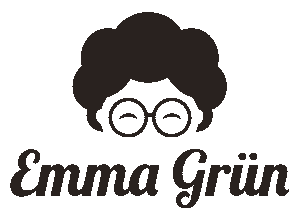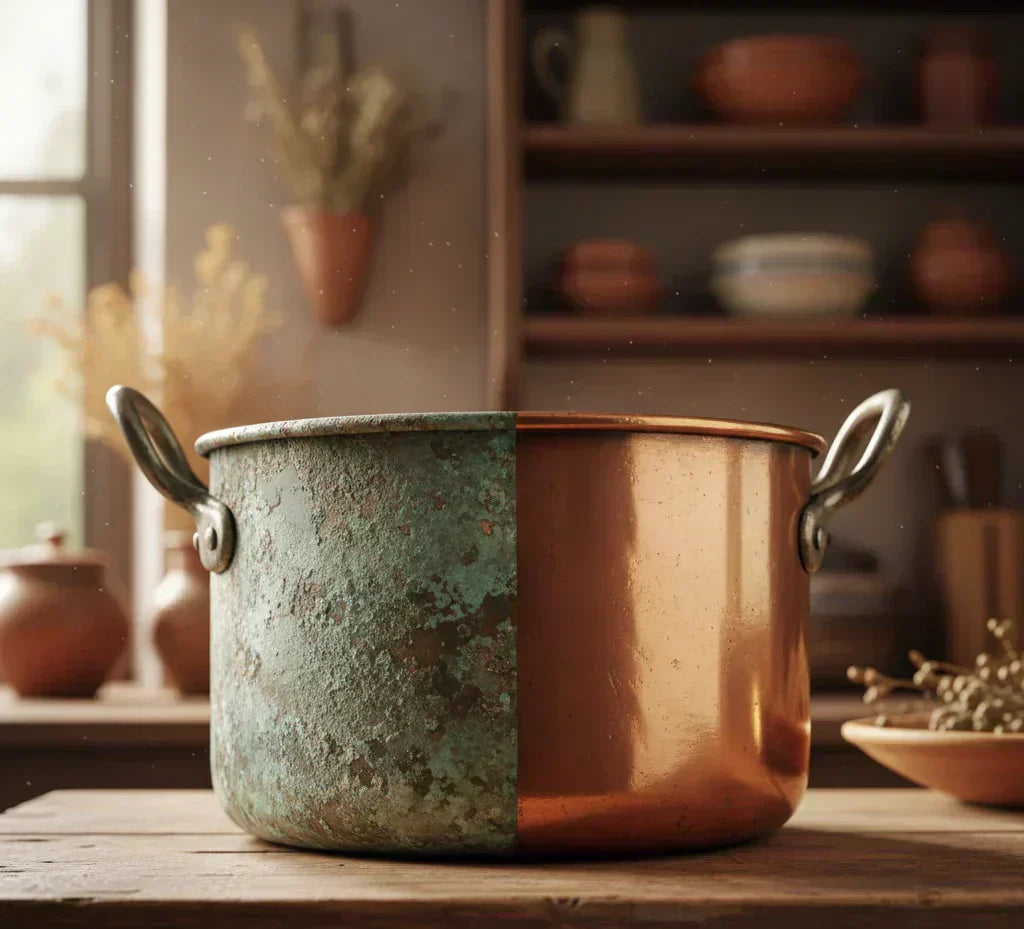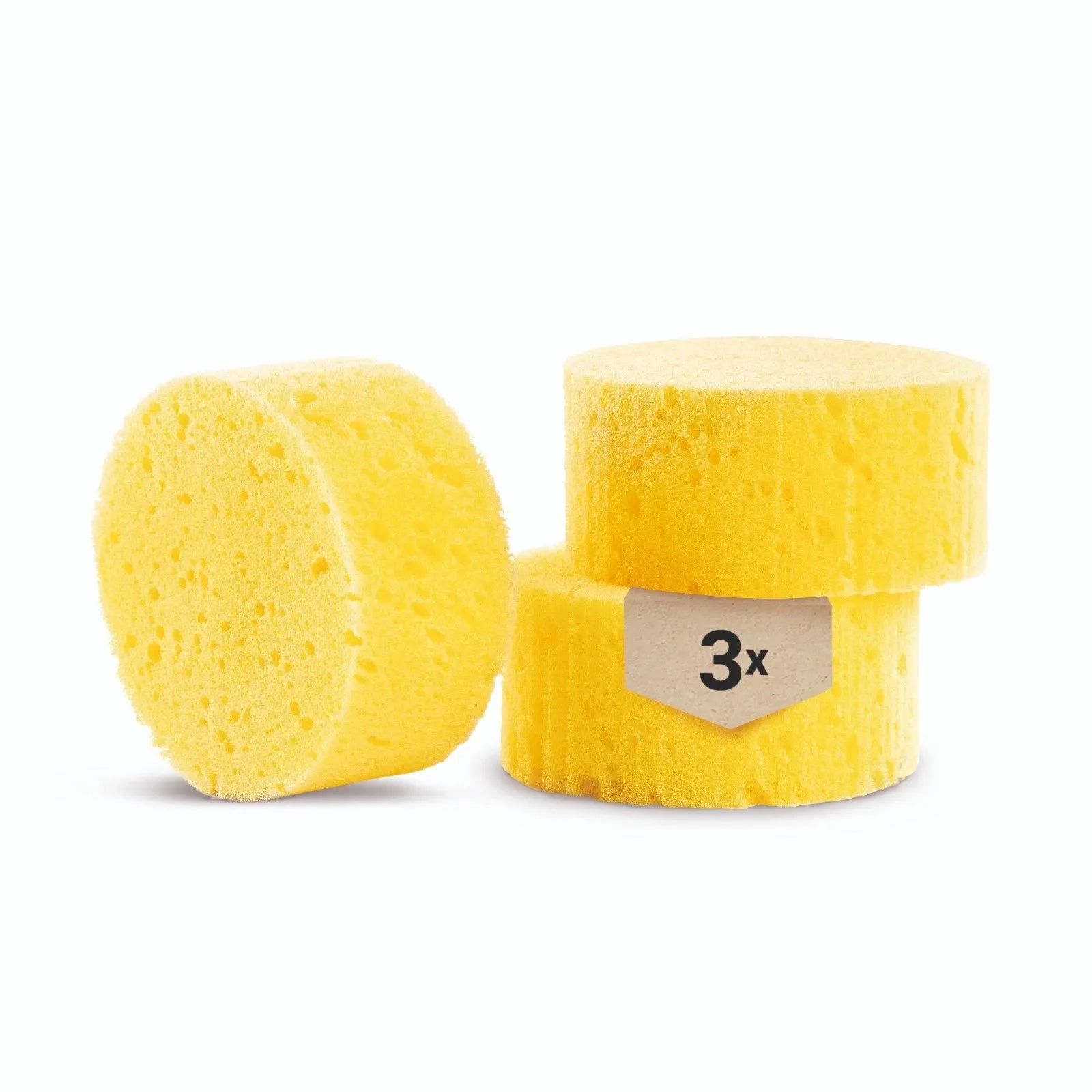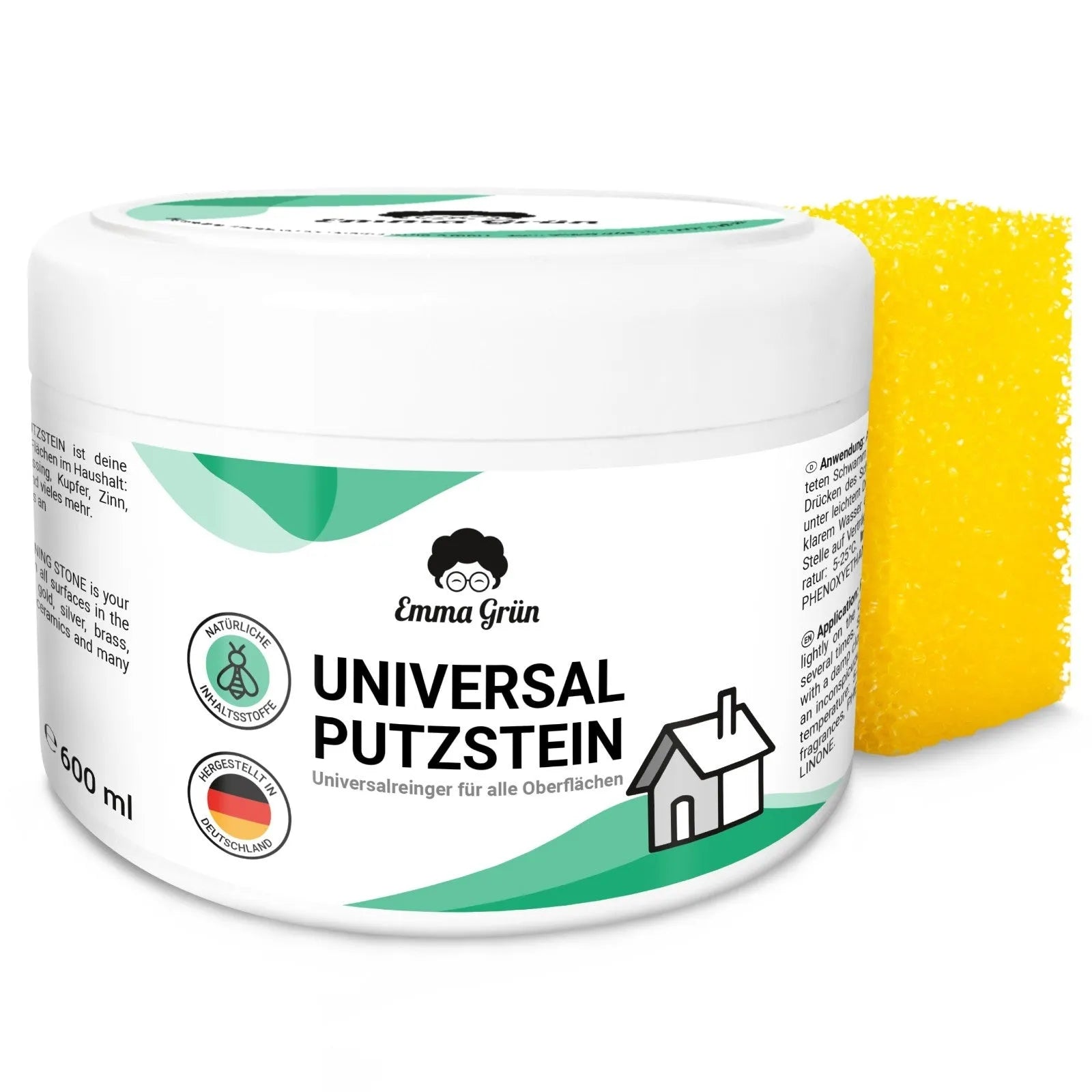Over time, copper can develop a green coating known as verdigris, which is not only unsightly but can also affect the quality of the metal. Whether it's jewelry, kitchen utensils or decorative items, in the following article we'll show you methods that are safe and effective and will make your copper shine like new. You'll also get valuable tips on how to remove verdigris and clean oxidized copper.
What is verdigris and what problems does the green coating cause?
Verdigris, also known as patina or rust , is a green layer that forms on copper and its alloys, such as bronze and brass . Chemically, the green coating consists mainly of copper carbonate, which forms when copper is exposed to atmospheric moisture and carbon dioxide for a long period of time. This process is called oxidation, in which the copper reacts with oxygen and other elements in the atmosphere. Copper verdigris forms particularly quickly in humid environments or when in contact with acidic substances .

Image source: Pixabay
However, verdigris is not just an aesthetic problem. It can also attack the surface of copper and weaken its structure. In some cases, however, verdigris is intentionally left as a protective layer on historic buildings or monuments, as the patina protects the underlying metal from further corrosion. However, for domestic use, most people prefer to remove the copper verdigris to preserve the shiny red appearance of the copper and ensure its longevity.
What should you pay attention to when cleaning copper?
Cleaning oxidized copper is a meticulous process to preserve the metal and restore its shine. Here are some recommended practices for cleaning oxidized copper:
- Determining the degree of oxidation: Before you start cleaning, you should assess the degree of oxidation. Light discoloration can often be treated with simple household remedies, while removing deeper oxidation requires stronger agents.
- Careful selection of cleaning agents: For light oxidation, natural acids such as vinegar or lemon juice can be effective . For more severe oxidation, special copper cleaners are necessary that are tailored to the chemical composition of copper.
- Gentle polishing: Regardless of the cleaning product you choose, it is important to polish the copper gently to avoid scratching the metal. A soft cloth or polishing brush should be used for this.
- Regular care: After cleaning oxidized copper, it is advisable to polish and care for the metal regularly to prevent future oxidation.
- Apply a protective layer: To protect copper after cleaning, a thin layer of wax or special protective varnish can be applied. This helps to protect the copper from moisture and dirt and slows down the oxidation processes .
- Keep dry: Oxidation occurs when copper is exposed to moisture, so it is important to keep copper items dry and protect them from humidity.
We have now clarified what you need to pay attention to when cleaning and caring for copper. But what measures can you take to make copper shine again?
Cleaning copper: What measures can remove verdigris?
When it comes to cleaning copper and removing verdigris, there are both mechanical and natural treatments that can produce effective results. What is certain is that each method has its own advantages and the choice can be made depending on the nature of the copper object and the extent of the verdigris.
Mechanical methods
Mechanical brushing is a gentle technique for removing verdigris from copper without damaging the surface . This method uses physical tools such as soft brushes, sponges or microfiber cloths . For light contamination, a simple wipe with a damp cloth can often help remove the green patina.
For more stubborn verdigris, a soft brush can be used together with warm water and a mild soap or a natural cleaner such as the all-purpose concentrates from Emma Grün . Mechanical cleaning is particularly recommended for sensitive objects as it is less damaging to the copper than chemical cleaners.
Chemical methods
Chemical methods for cleaning copper use reactive substances to remove verdigris and brighten oxidized copper. Here are some common chemical approaches:
- Ammonia solutions: Ammonia can clean copper by dissolving discoloration and preventing tarnishing . However, this method should be performed with a respirator and in a well-ventilated area , as ammonia gives off strong fumes and can irritate the respiratory system.
- Commercial copper cleaners: There are many conventional products on the market that are specifically designed for cleaning copper. These often contain strong acids or ammonia to ensure quick and effective cleaning.
Care should be taken when using chemical methods to remove verdigris , as these substances can also be harmful to the skin or respiratory system . It is always advisable to wear protective gloves and work in a well-ventilated area. After chemical treatment, the copper should be thoroughly rinsed with clean water and polished dry to remove residue and give the item a new shine.
Emma Grün Tip: If we consider both treatment methods, most of us will quickly realize that chemical methods for cleaning copper are by far the worst choice . This is because aggressive substances such as acids and ammonia are not only harmful to humans. If chemicals of this kind get into the outside world, they also cause great damage to the environment. That's why you should always choose natural alternatives for cleaning copper and other precious metals .

Products like the all-purpose concentrates from Emma Grün have concentrated cleaning power in the truest sense of the word and are completely safe to use. They remove verdigris using plant-based surfactants and sodium salts without damaging the surfaces , harming your health or harming the environment.
Cleaning copper with cola: is it possible?
Cola is not only a popular soft drink, but also an amazingly effective cleaning agent for copper . The acids contained in cola, especially phosphoric acid, are effective against verdigris and can clean oxidized copper . The acid dissolves the oxidized layers without attacking the underlying metal. Here's how it works:
- Prepare with Cola: To clean copper with Cola, simply place the affected object in the sweet drink or pour the liquid directly onto the areas covered with verdigris.
- Allow to take effect: After a few hours of exposure, the verdigris should be soft enough to be wiped off with a soft brush or cloth. For a more intensive treatment, the copper objects can also be soaked in cola overnight.
- Rinsing & drying: To avoid a sticky surface, the copper is finally rinsed thoroughly with water and polished dry.
This method is particularly popular because it offers a simple and gentle alternative to chemical cleaning products. In addition, cola is usually readily available and therefore a practical option for cleaning copper.
However, you should be careful with antique or valuable copper objects and, if in doubt, use professional cleaning products to avoid damaging the material.
Cleaning copper with effective household remedies
Cleaning copper with household remedies is an environmentally friendly and gentle way to remove verdigris and polish oxidized copper. Here's a simple guide for using vinegar and salt, as well as lemon juice and baking soda.
Cleaning copper with vinegar and salt
- Preparation: Make a mixture by mixing half a cup of vinegar and a tablespoon of salt in a bowl. For larger copper pieces, you can increase the amount proportionally.
- Application: Soak a soft cloth or sponge in the vinegar-salt solution and apply it directly to the copper surface. For hard-to-reach areas or deep-seated verdigris, you can pour the mixture directly onto the copper and let it work.
- Sufficient exposure time: Allow the solution to act on the copper for a few minutes to dissolve the verdigris. For stubborn stains, the exposure time can be extended to up to an hour.
- Aftercare: After the exposure time, rinse the copper with clean water and polish it dry with a soft cloth. The copper should now regain its natural shine.
Emma Grün Tip: Instead of vinegar, you can also use citric acid. The acid from citrus fruits mixed with salt achieves the same effect.
Clean copper with lemon juice and baking soda
- Make a paste: Mix lemon juice with baking powder to make a thick paste. The ratio should be such that the paste adheres well and is not too runny.
- Application: Use a cloth or brush to apply the paste to the oxidized copper. The natural acidity of the lemon juice and the abrasive action of the baking soda will help loosen the verdigris.
- Allow to take effect: Allow the paste to take effect for about 5 to 10 minutes. If the discoloration is severe, the exposure time can be extended.
- Wipe off: Now remove the paste with a soft cloth or brush. If necessary, you can apply a little pressure to remove any remaining verdigris.
- Rinsing and polishing: To finish, the copper object is rinsed with warm water and polished to a high shine with a dry, soft cloth.
The natural methods mentioned are not only effective, but also kind to the environment and safe for regular use. After cleaning, it is important to dry the copper completely to prevent the formation of new oxidation .
Conclusion
Caring for and protecting copper items is essential to maintaining their longevity and beauty. After cleaning, copper items should always be dried thoroughly to remove any water residue that can cause further oxidation. Regular polishing with a soft cloth can prevent tarnishing.
To protect copper over the long term, it is recommended to apply a thin layer of wax or varnish to act as a barrier against moisture and dirt. When storing copper items, it is also important to keep them in a dry, cool place away from direct heat sources.
FAQ: Questions & Answers
Can verdigris on copper be harmful to health?
Although verdigris is not toxic, it is still recommended to clean copper items before using them in the kitchen.
How do I remove verdigris from copper objects?
Verdigris can be removed with a mixture of vinegar and salt or lemon juice and baking soda. For a satisfactory result, the preferred mixture is applied to the object with a sponge. After a suitable exposure time, the natural agent and the verdigris are wiped off with a soft cloth.
Is it safe to clean copper with cola?
Cola is a miracle cure for cleaning oxidized copper because the acids in the cola help to dissolve the verdigris.
Can I clean copper jewelry the same way as copper tableware?
Jewelry can be cleaned using the same household remedies or cleaners. However, more care should be taken, especially if the copper jewelry contains gemstones or other metals.
How often should I clean my copper items?
How often copper items should be cleaned depends on how they are used and how they are stored. Cleaning is recommended if there are any signs of tarnishing or verdigris.
What is the best way to store copper after cleaning?
After cleaning, copper should be kept dry and sealed with a thin layer of wax or varnish to protect it from further oxidation.
Sources
1. Cleaning copper – https://www.haus.de/leben/kupfer-reinigen-3086
2. How to clean copper properly: Here's how – https://www.frag-team-clean.de/reinigen/kupfer-schonend-reinigen.html
3. Cleaning copper – https://www.heimwerker.de/kupfer-reinigen/
4. Cleaning copper – https://www.putzen.de/kupfer-reinigen/
5. Cleaning copper: The best tips and home remedies – https://praxistipps.focus.de/kupfer-reinigen-die-besten-tipps-und-hausmittel_43698





